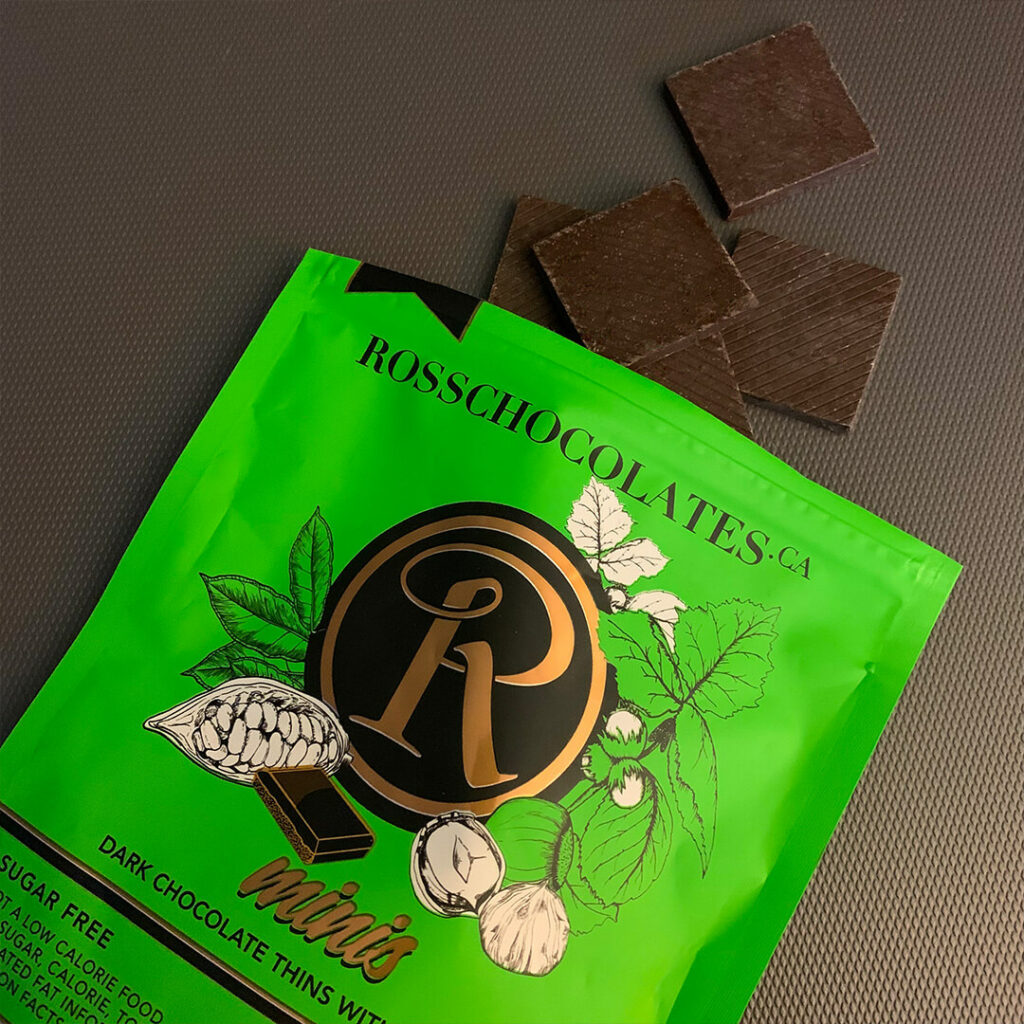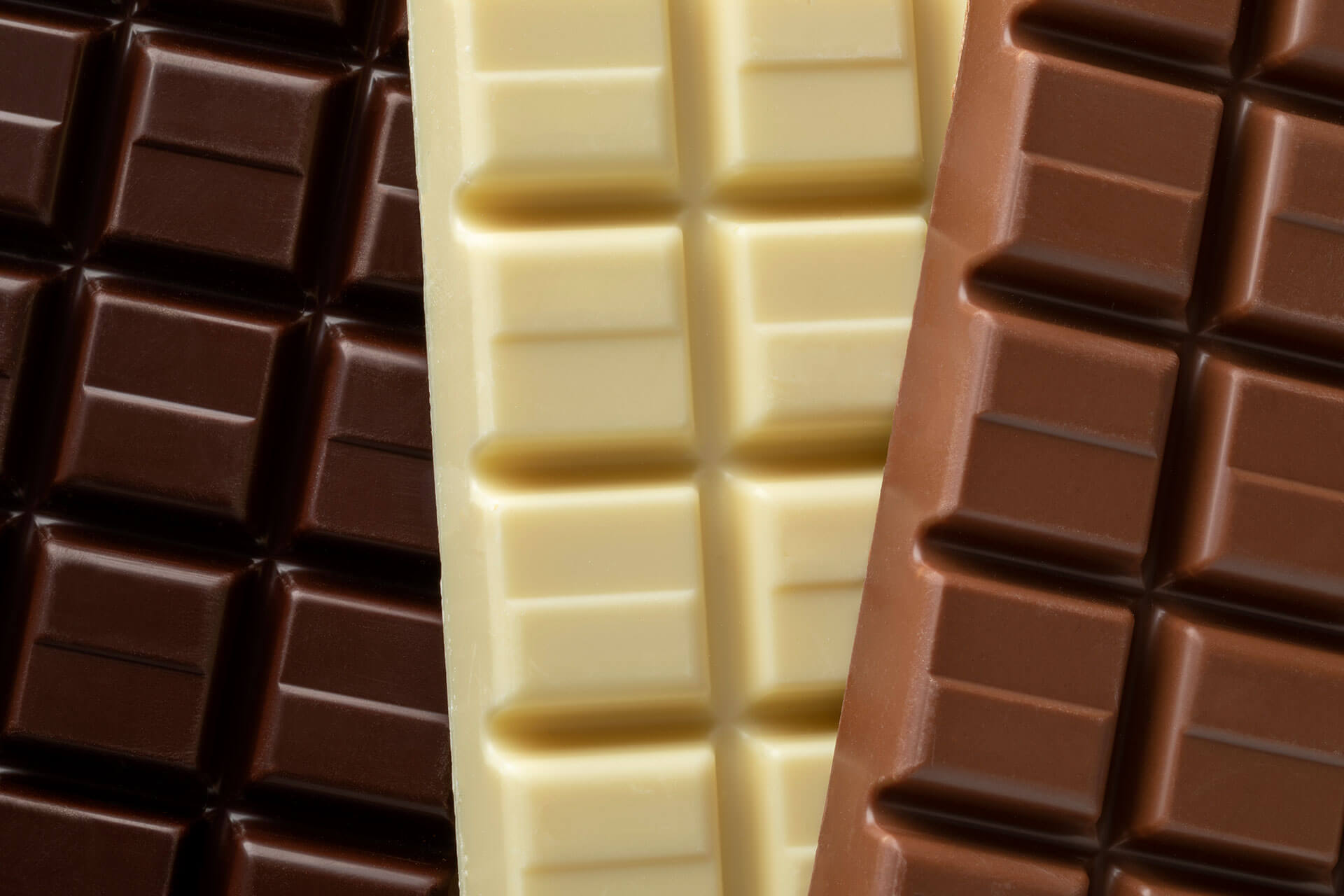Those wishing to reduce sugar and/or carbohydrates in their diets often avoid chocolate and other sweets completely, but total elimination of chocolate is not necessary to follow a diabetic, keto-, or low-carb diet, especially when no sugar added chocolate is chosen.
Chocolate has many positive benefits not the least of which is that it just tastes wonderful and, for many, is comforting. But, what type of chocolate is the most beneficial? White, milk, or dark?
White Chocolate
Let’s start with white chocolate, which does not actually contain chocolate at all! The only portion of the cocoa bean that is used in white chocolate is its butter. White chocolate is a good choice for those trying to avoid caffeine because – unlike milk or dark chocolate – it does not contain any. Other benefits of eating white chocolate in small or moderate amounts include:
- Antioxidants – White chocolate contains antioxidants called flavonoids that neutralize free radicals that damage our cells (including causing aging) and increase our risk for disease.
- Cardiovascular Health – White chocolate flavonoids prevent clumping arteries, reducing the risk of heart disease.
- High Blood Pressure – Again, the flavonoids in white chocolate, have been shown to lower high blood sugar, allowing blood vessels to function more easily.
Milk Chocolate
Milk chocolate has been the most favored chocolate since the 1930s, beating out dark chocolate 54 years after its invention by Daniel Peter in Switzerland[1]. Milk chocolate is made from dark chocolate with:
- a low level of cocoa solids,
- a milk product or products of some kind, and
- a high amount of sugar or sweetener.
Milk chocolate is typically lighter and sweeter than dark chocolate but in recent years, milk chocolates with higher levels of cocoa – producing a more chocolatey flavor – have been more common. Milk chocolate is usually higher in fat, particularly saturated fat, and carbohydrates (due to the milk it contains) than dark chocolate. Benefits of milk chocolate include:
- Calcium – Due to the milk in its recipe, milk chocolate contains more calcium than dark chocolate.
- Heart Health – Just like white chocolate, the flavonoids in milk chocolate improve heart health by reducing clogged arteries and improving blood pressure.
- Brain Health – Milk chocolate contains caffeine, magnesium, and theobromine, all of which stimulate the brain and assist with thought processes and improve concentration and alertness.
- Joint Health – Antioxidants in milk chocolate called polyphenols fight inflammation in our joints and reduce the risk of age-related arthritis.
- Cough/Cold Relief – Milk chocolate phenolics also strengthen the immune system, and epicatechin in milk chocolate activate detoxification processes that rid us of coughs and colds.[2]
- Oral Health – Theobromine, a stimulant in milk chocolate, was found to also be more effective at hardening tooth enamel than fluoride in 2007. Which may beg the question, “How effective is fluoride?” Theobromine is a bitter-tasting compound made from the cocoa bean, so it’s unlikely that we’ll see chocolate-flavored toothpaste anytime soon.
- Emotional Health – The magnesium in milk chocolate helps the pituitary gland operate well, which means we get enough serotonin (the “happiness hormone”) and less cortisol (the “stress hormone”) coursing through our bodies. Besides that, the phenylethylamines in milk chocolate can induce feelings of euphoria, which as associated with the feelings of love.
Dark Chocolate
Take what we learned about the benefits of milk chocolate and multiply them by at least 5 to start understanding the benefits of dark chocolate. Dark chocolate has no milk component to it and has a higher cocoa content than milk chocolate. Thus, because it is the cocoa bean that holds all the goodness in chocolate, dark chocolate is better for one’s health than milk chocolate.
Milk chocolate has only one-fifth of the cocoa found in dark chocolate, which starts with a content of 50% and rises from there. Essentially, the higher the cocoa content, the higher the health benefits.
So, except for calcium, which is absent, dark chocolate has all the benefits of white and milk chocolate and even more. Dark chocolate is:

- Higher in Fiber – Dark chocolate has 4-times the fiber of milk chocolate.
- High in Iron – Dark chocolate is almost 5-times higher in iron than milk chocolate.
- Higher in Magnesium, Phosphorus, and Potassium – Dark chocolate has 3-times the amount of magnesium, almost 2-times the Phosphorus, and double the Potassium found in milk chocolate.
- Less Sodium and Cholesterol – Dark chocolate has three-quarters the sodium and one-tenth the cholesterol of milk chocolate.
- Higher Theobromine – With almost 4-times the theobromine of milk chocolate, dark chocolate assist more in lowering blood pressure.
Finally, dark chocolate has 4-times the caffeine of milk chocolate, but whether this is a good or a bad thing is up to you – it is still much lower than a cup of coffee. Dark chocolate is slightly higher in calories than milk chocolate but because of its rich flavor and nutrient-packed make-up, it takes less dark chocolate to satisfy one’s cravings and health needs.
Which Should You Choose?
Because chocolate is a treat, that should never be eaten in large quantities due to its fat content (whether white, milk, or dark), it isn’t necessary to choose one type of chocolate over another for health reasons: You should choose the flavor and texture you like the best.
But, if you are trying to eat more healthfully and are worried about which chocolate is best for you, dark should be your first choice. Just be careful and read labels to check on the ingredients (generally, the fewer the better) and nutrition labels (try to choose chocolate lower in calories, fat, and sugar), and look at the fiber content to ensure you are choosing dark chocolate you are happy with.
[1]Sydney, R. (2009). History of Chocolate: Chocolate in the American Colonies. Retrieved from https://www.history.org/history/teaching/enewsletter/volume9/jan11/featurearticle.cfm on January 10, 2020.
[2] Rainey, S. (August 23, 2019). Choc Full Of Goodness: How Milk Chocolate’s Not Only Good For Your Heart – It Also Boosts Your Brain, Your Libido, And Even Your Figure. Retrieved from https://www.dailymail.co.uk/health/article-3127347/Choc-goodness-scientists-prove-milk-chocolate-s-good-heart-s-not-good-news-s-boosts-brain-libido-figure.html on January 10, 2020.






0 Comments